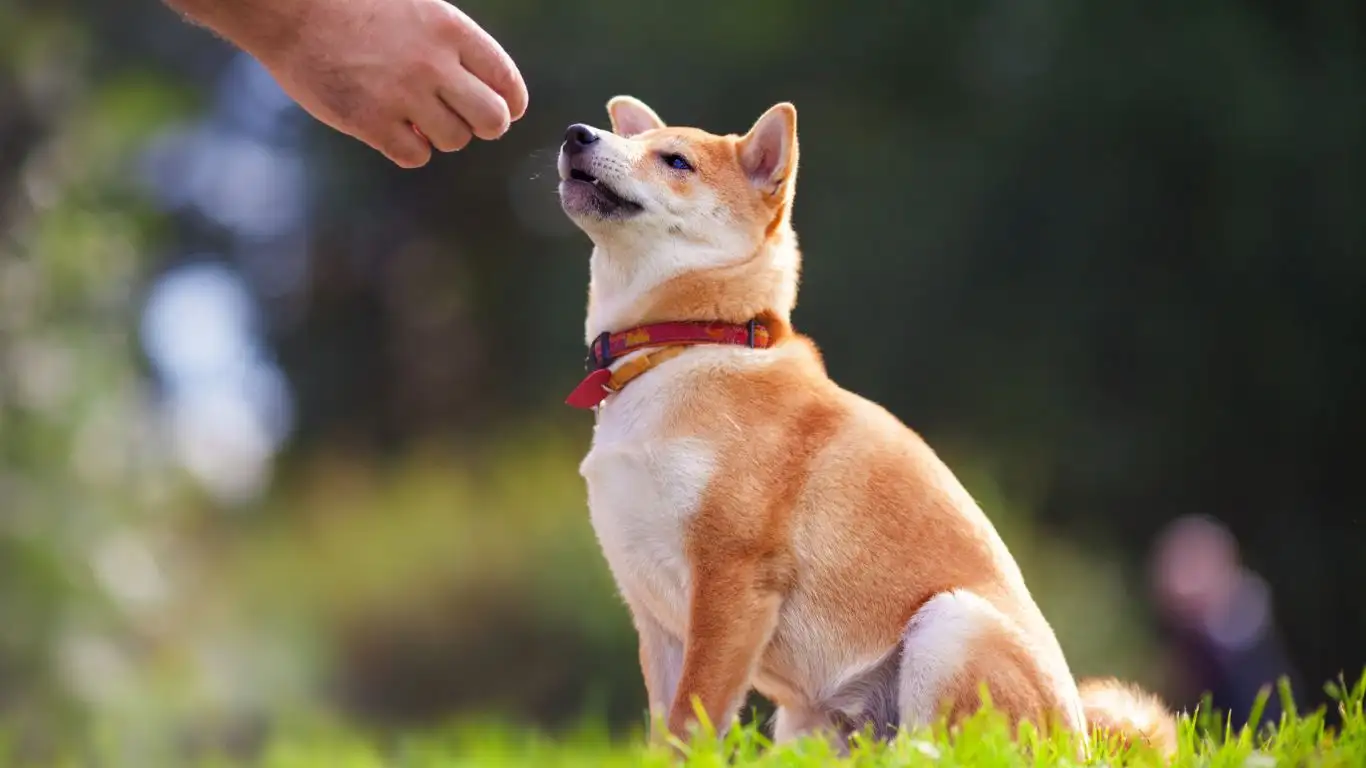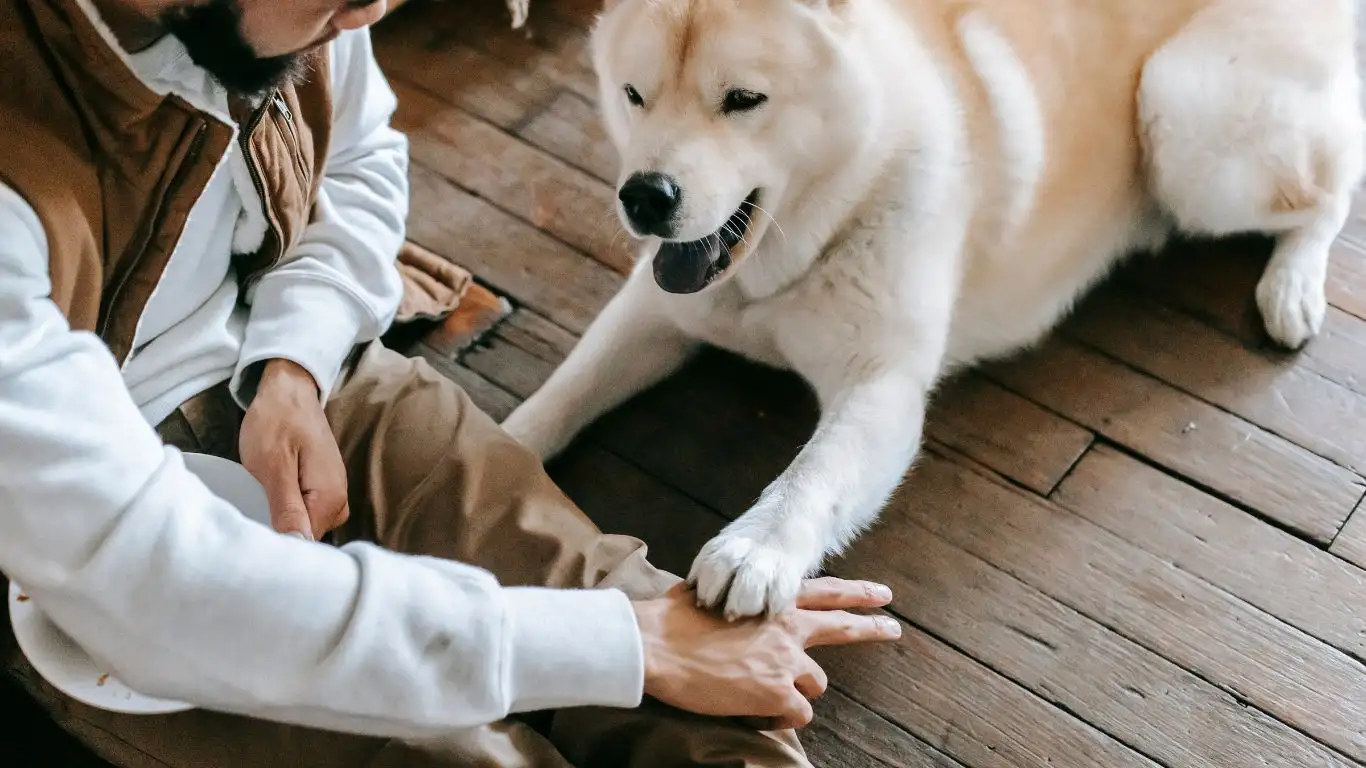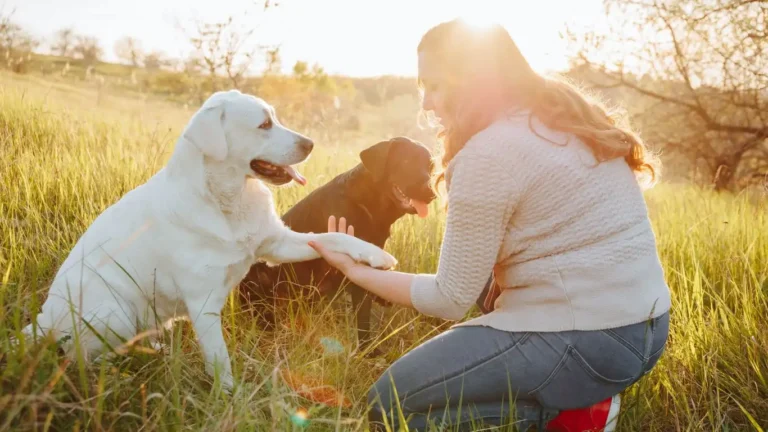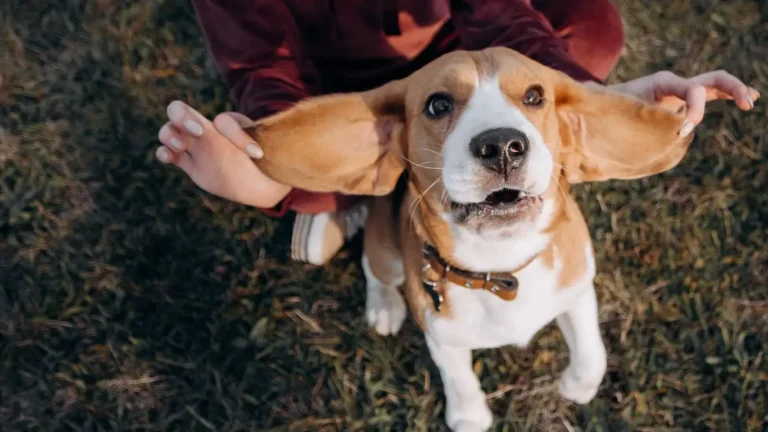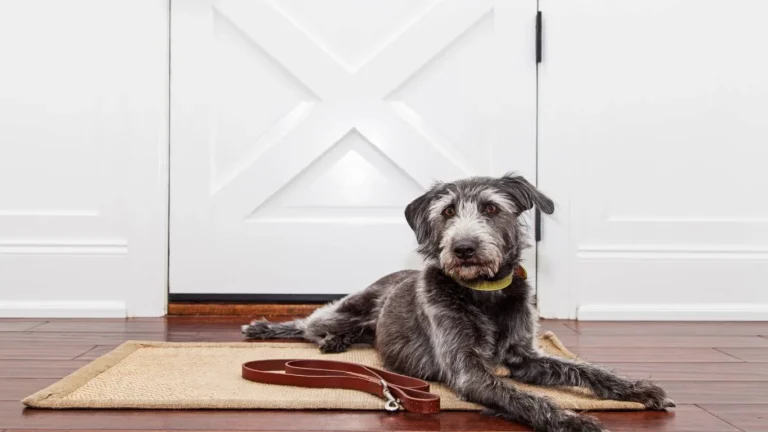How to Train a Dog to Sit Calmly in a Café: Simple Steps to Success
As a Canine-Assisted Therapy Trainer, I’ve had the pleasure of working with a variety of dogs and their owners. One common question I get asked by pet parents is how to train a dog to sit calmly in a café or restaurant. It’s a practical skill that not only makes dining out more enjoyable but also fosters better social interactions between you, your dog, and other patrons. Whether you’re a seasoned dog owner or just starting with canine training, this is one of those invaluable skills that will make your outings much more relaxed and enjoyable.
Understanding the Basics of Canine Calmness in Public Spaces
Before we dive into the nitty-gritty of training your dog to sit calmly in a café or restaurant, let’s first address the concept of calmness in public spaces. Dogs, by nature, are curious creatures, and when they’re in a bustling environment like a café, there’s a lot going on: new smells, sounds, sights, and people. Some dogs may find it overwhelming, while others may get excited or even anxious. The goal is to help your dog become accustomed to these distractions and learn to stay calm despite them.
Why Calmness Matters for Café and Restaurant Outings
Taking your dog out to public spaces like cafés or restaurants can be a rewarding experience, but it requires patience and preparation. A dog who isn’t trained to remain calm in such environments can quickly become disruptive, causing stress for you, the dog, and the people around you. Imagine trying to enjoy your meal while your dog barks or pulls at the leash. Not only can this embarrass you, but it can also be dangerous for your dog and others in the vicinity.
On the other hand, a well-trained dog who remains calm in these settings enhances your overall dining experience. This skill can also be incredibly beneficial for dogs with anxiety or nervous tendencies, as it builds confidence and socialization skills. It’s a win-win situation all around!
Step 1: Building a Strong Foundation at Home
Before you even think about taking your dog to a café or restaurant, you’ll want to ensure they’ve mastered basic commands and have a solid foundation of good behavior at home. If your dog can’t sit calmly in your living room, it’s unlikely they’ll be able to do it in a noisy, crowded café.
Start with the Basics
The first step in training your dog to sit calmly in public spaces is to teach them the “sit” command. It’s a simple but essential command that forms the basis for all future training. Start in a quiet, familiar environment like your living room. Hold a treat above your dog’s nose and slowly move it back over their head. This will naturally encourage them to sit. Once they’re seated, immediately reward them with the treat and a lot of praise.
Tip from personal experience: Keep training sessions short and positive! Dogs learn best when they’re not overwhelmed. Try about 5-10 minutes at a time and gradually increase the duration as your dog gets better at sitting.
Introduce Distractions Gradually
Once your dog has mastered the basic “sit” command in a quiet space, it’s time to introduce mild distractions. Start by having a family member or friend walk around while you practice the command. You can even start playing TV sounds or music in the background to simulate a busier environment. The goal is to help your dog learn to stay focused on the task, no matter what’s going on around them.
Step 2: Socializing Your Dog
Another crucial element of training is socialization. If your dog has only been around a few people or in a quiet setting, they may get overwhelmed by new environments. Socialization helps your dog become accustomed to different sounds, smells, and people—key elements of a café or restaurant setting.
Start with Calm Visits to Busy Places
Once your dog has a handle on basic commands, start taking them to quiet but public places like parks or pet-friendly shops. These places will expose them to a variety of sounds and sights without the intense distractions of a busy café or restaurant. Remember to keep these visits short and positive. The goal is to gradually build your dog’s tolerance to being in a public space while remaining calm and well-behaved.
As your dog becomes more comfortable with these public outings, you can start increasing the level of distractions. A local café with outdoor seating is a great next step, especially if it’s not too crowded. Here, you can start practicing having your dog sit calmly while you enjoy a coffee or snack.
Step 3: Using Positive Reinforcement
Positive reinforcement is a game-changer when it comes to training dogs, and it’s especially effective for teaching your dog to stay calm in public places. Rewarding your dog for sitting quietly, ignoring distractions, and remaining calm is the key to reinforcing this behavior over time.
What to Reward
In the beginning, reward your dog every time they successfully sit calmly in a café or restaurant. You don’t need to wait for hours of stillness—just a few moments of calm behavior can be enough to start reinforcing the behavior. Over time, you can gradually increase the amount of time your dog needs to stay calm before rewarding them. Remember, consistency is key!
Why Positive Reinforcement Works
Positive reinforcement creates a clear connection in your dog’s mind: good behavior = reward. This helps your dog understand exactly what you’re asking them to do. It also strengthens the bond between you and your dog, as they start to see you as the source of good things (treats, praise, etc.).

Step 4: Bringing Your Dog to a Café or Restaurant for the First Time
By now, your dog should have mastered the basic skills of sitting calmly at home and handling some distractions. Now comes the big step: taking your dog out into the world. This might sound intimidating, but trust me, it doesn’t have to be. Start small, and don’t expect perfection right away. The key is gradual exposure and consistency.
Choose the Right Venue
As someone who has taken many dogs to different public spaces, my first piece of advice is to choose a venue that is quiet and relatively dog-friendly. Avoid the busiest cafés or restaurants on weekends or during peak hours. Look for a place with outdoor seating or a less crowded corner to help your dog ease into the experience. I often recommend starting with a café or restaurant that has a relaxed vibe, where people are used to seeing dogs, and the staff is welcoming.
Even if you don’t have outdoor seating, some places have dog-friendly indoor areas, and others may allow dogs on patios or balconies. Be sure to call ahead and ask about their pet policy. It’s always better to know before you arrive so that you’re not caught off guard.
Set Realistic Expectations
At first, your dog might not sit perfectly for the entire duration of your visit. And that’s totally fine! If your dog can sit calmly for 5 minutes without any major signs of stress, you’re already on the right track. Over time, you can extend this duration as your dog becomes more comfortable and familiar with the surroundings.
Pro Tip: Don’t be discouraged if your dog gets up or starts to get distracted. It’s completely normal for them to want to sniff around or get curious about the environment. Just calmly guide them back into their sit position, and reward them when they settle down. Patience really is key here!
Step 5: Practice, Practice, Practice
Now that you’ve taken your dog out into a public space, it’s time to practice regularly. Like any other skill, the more you practice sitting calmly in a café or restaurant, the better your dog will get at it. Consistency is what makes the difference between a dog who is just “okay” in public and a dog who is rock solid and well-behaved.
Short, Frequent Outings
To help your dog build the necessary skills, it’s important to take them out frequently but for shorter periods. Start with a 10-15 minute visit and gradually work your way up. On each outing, reinforce positive behavior with treats and praise. Over time, your dog will start to associate sitting calmly in these environments with rewards.
Consistency helps your dog learn that sitting calmly equals good things—whether that’s a tasty treat or a relaxing outing with you. The more frequently you expose your dog to these types of experiences, the more relaxed and well-mannered they’ll become in social settings.
Use Calm and Clear Commands
As you continue to practice, use calm, consistent commands to reinforce the behavior you want. Phrases like “sit,” “stay,” or “settle” are great cues to teach your dog when it’s time to chill out. If your dog is looking a little too excited or antsy, a calm “settle” command followed by a gentle hand gesture can help them understand it’s time to relax.
Tip: Always make sure to reward your dog immediately after they follow the command. This helps them make the connection between the behavior and the reward. Positive reinforcement is one of the most effective tools in dog training!
Step 6: Managing Distractions in Public Spaces
One of the toughest challenges in training a dog to sit calmly in a café or restaurant is managing the many distractions around them. People, other dogs, food smells, and even the sounds of a busy kitchen can all contribute to your dog’s excitement. It’s essential to practice managing these distractions in a controlled way so that your dog can focus on you instead of the environment.
Start with Low Distraction Environments
In the beginning, it’s important to avoid venues with too many distractions. Find places that are moderately busy, but not overwhelmingly so. A bustling café with people talking, the clinking of silverware, and the scent of food wafting through the air can be a lot for some dogs. Begin with quieter places, and as your dog gets better at focusing on you, you can increase the level of distractions.
When your dog notices a distraction, it’s easy for them to get excited or anxious. But it’s important to stay calm and redirect their focus. Keep a treat or toy handy to help keep their attention. For example, if your dog starts to look at something or someone across the room, gently call their name or give a “look at me” command to bring their focus back to you. Immediately reward them when they make eye contact with you.
Use the “Leave It” Command
Another useful command when dealing with distractions is the “leave it” command. This can be especially helpful if your dog starts to focus too intently on food or people nearby. The “leave it” command teaches your dog that sometimes, they need to ignore distractions and refocus on you. Begin practicing this command at home with items your dog finds intriguing, and gradually work your way up to more challenging distractions, like food in public spaces.
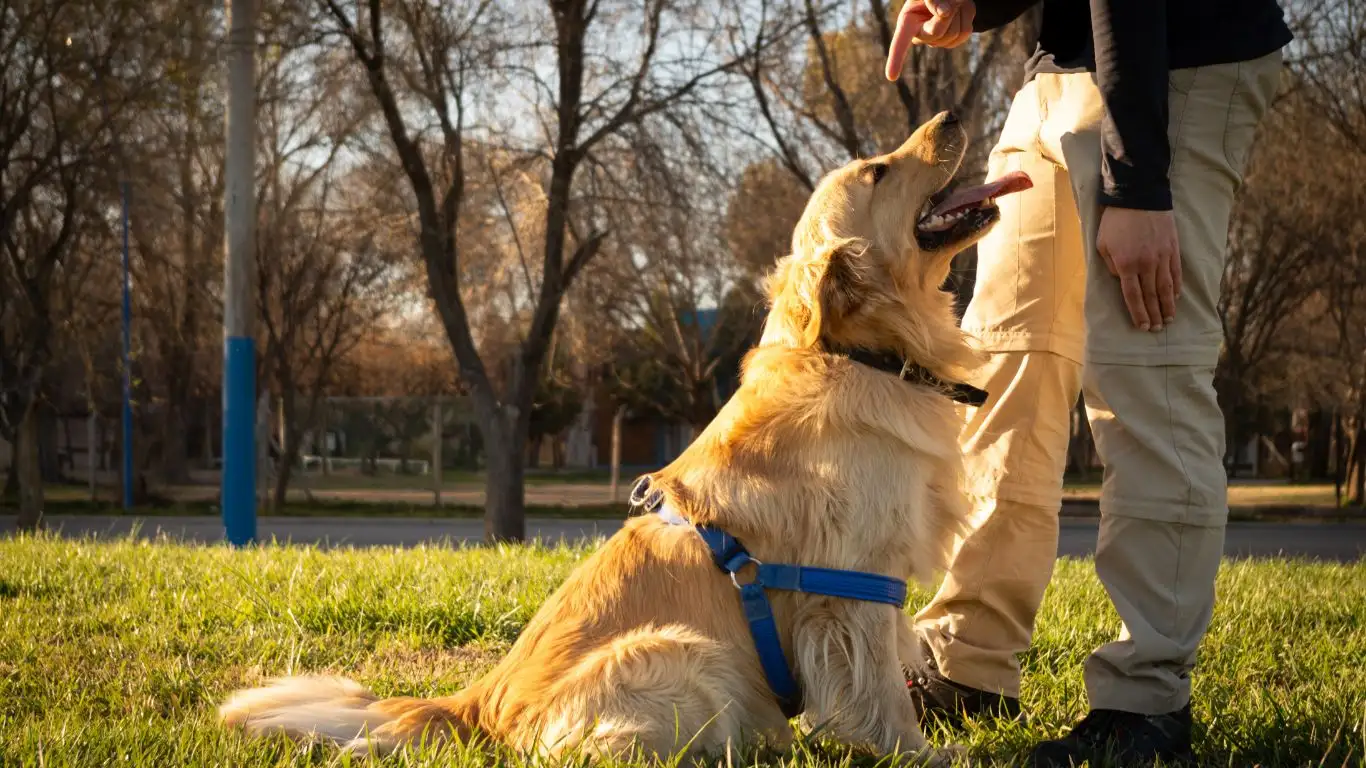
Step 7: Handling Common Challenges
By this stage, you and your dog have been practicing sitting calmly in public spaces for a while. But let’s be honest—sometimes things don’t go as planned. Whether it’s an unexpected loud noise or your dog’s sudden excitement at seeing another dog, there will be bumps along the way. The good news? That’s normal! As a Canine-Assisted Therapy Trainer, I can tell you that dealing with challenges is part of the journey.
Dealing with Anxiety or Stress
Some dogs can become anxious or stressed in new environments, especially if they’re not used to the hustle and bustle of a café or restaurant. If you notice your dog showing signs of stress—like excessive panting, drooling, or pacing—take a moment to assess the situation. It could be that the venue is too loud or crowded, or your dog simply hasn’t fully acclimated to the environment yet.
Tip from personal experience: If your dog seems stressed, it’s okay to cut the visit short. You can try again another time, but be sure to reward them for any positive behavior, even if it’s just sitting calmly for a few moments. Gradually, your dog will learn that visiting public spaces doesn’t always mean stress and discomfort.
How to Stay Calm and Lead By Example
Dogs are incredibly intuitive and can sense our emotions. If you’re feeling stressed or anxious about your dog’s behavior, they might pick up on it and become even more unsettled. This is why it’s essential to stay calm and confident during your outings. If your dog starts to get anxious or excited, take a deep breath and calmly guide them back to a sitting position. Dogs respond well to clear, confident leadership, and if they sense you’re in control, they’re more likely to stay calm themselves.
When Your Dog Doesn’t Want to Stay Still
If your dog is having trouble staying still, it could be due to a variety of reasons, such as overstimulation or lack of sufficient exercise before your outing. Make sure your dog gets plenty of physical and mental stimulation before you head out to ensure they have enough energy to settle down. A long walk or a game of fetch can help tire them out before your café visit.
Pro Tip: If your dog is still struggling to sit calmly, try bringing along a favorite toy or chew to help keep them occupied. Sometimes, having a small distraction can help them stay in one spot without becoming too agitated.
Step 8: Reinforcing Good Behavior Over Time
Training your dog to sit calmly in a café or restaurant doesn’t stop after a few successful visits. Just like any other skill, it requires ongoing reinforcement to maintain good behavior. This is where the real magic happens!
Varying the Rewards to Keep Things Interesting
As your dog becomes more comfortable with the routine of sitting calmly in cafés, you can begin to vary your rewards. While treats are still essential, consider mixing it up with different types of rewards. Some dogs respond better to praise and attention than food, while others love the extra playtime or a special outing. Figure out what motivates your dog the most and keep things fresh.
Maintaining a Regular Routine
To keep your dog well-behaved, try to incorporate regular visits to cafés or similar public places into your routine. This way, your dog won’t forget what they’ve learned, and it will become second nature for them to stay calm. The more consistent you are, the better your dog will get at sitting still in public spaces. Plus, it’s a great way to strengthen the bond between you and your dog!
References and Resources for Further Reading
If you’re looking to dive deeper into dog training and behavior, here are some great resources to check out:
- American Kennel Club – Great resource for dog training tips, breed information, and more.
- PetMD – Excellent advice on dog health, behavior, and training.
- National Institutes of Health (NIH) – Research and insights into the science of dog behavior and health.
- Health.com – Articles on pet care and mental health for pets.
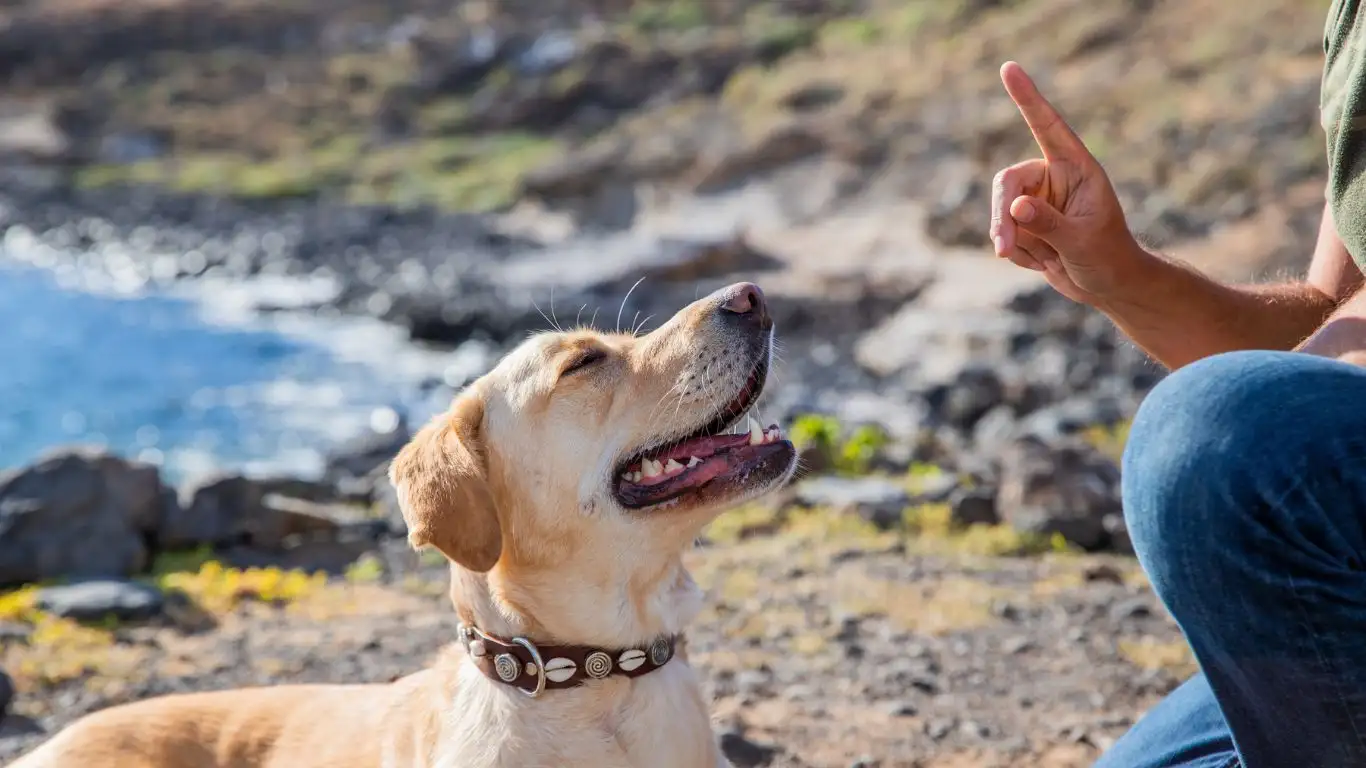
Disclaimer
Always consult with a professional dog trainer or veterinarian if you encounter behavioral issues that you are unable to manage. The tips and techniques shared here are based on personal experience and should be adapted to your dog’s unique needs. Training can take time, and it’s important to be patient and consistent in your efforts. Each dog is different, and what works for one may not work for another. Be sure to use methods that align with your dog’s temperament and needs.
By following these steps and remaining patient, you’ll be well on your way to having a dog who is calm, composed, and well-behaved in any café or restaurant setting. With time and practice, your dog will enjoy these outings as much as you do!
